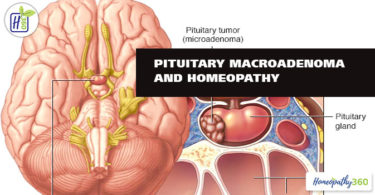Interpretation of Blood Gases in Children – Arterial Blood Gas (Abg), Capillary Blood Gas (Cbg), Venous Blood Gas (Vbg)
Authored by:
Dr Roopa Salin
Assistant Professor
Dept of Practice of Medicine
Yenepoya Homoeopathic Medical College & Hospital
Mangalore, Karnataka
INTRODUCTION
A blood gas is a test that helps to determine respiratory function, particularly how well a child’s body is exchanging oxygen and carbon dioxide, as well as the acid/base status (pH) of the blood. While most commonly used to determine a child’s respiratory status, blood gases can also assess issues caused by metabolic or renal disorders.
There are three basic methods of obtaining blood gases, based on how the sample is acquired:
Arterial blood gases are the most reliable, but require blood to be obtained from an artery. Children in the NICU or PICU may have a line placed in an artery if frequent blood gases are needed. Other children will need to have an arterial stick, which is like drawing blood but from an artery instead of a vein. This can be painful and can cause considerable bleeding for many children.
Capillary blood gas are more for routine checks of the body’s respiratory status. A CBG only requires a finger prick or heel stick, and is much less painful than an ABG. The results however are not as reliable as an ABG.
Venous blood gases (VBG) are even more unreliable, but may be required under certain circumstances when an ABG or CBG cannot be performed. A VBG typically provides an accurate pH level as well as a decent carbon dioxide level, but the oxygen level tends to read much lower as compared to an ABG. The results are most useful in determining trends or assessing children with milder conditions when precision is not necessary.
WHAT IS MEASURED?????
A blood gas typically measures three things:
- The ph of the sample (how acidic or basic it is)
- The oxygen level
- The carbon dioxide level.
Using these three values, as well as known factors such as body temperature and normal haemoglobin values, it is possible to calculate a variety of additional numbers.
These are the values typically measured or calculated in a blood gas:
- pH: How acidic or basic the blood is.
- PO2 : The dissolved oxygen in the blood. PaO2 is for arterial blood; PvO2 is for venous blood.
- PCO2 : The dissolved carbon dioxide in the blood. PaCO2 is for arterial blood; PvCO2 is for venous blood.
- O2 saturation (SpO2 ): How much oxygen the blood is carrying as a percentage of how much it can carry.
- HCO3 : A calculation of how much bicarbonate (base) is in the blood.
- Base Excess/Deficit: A calculation to determine the positive (excess) or negative (deficit) amount of buffer (base) that has been used up by the body.
NORMAL VALUES OF BLOOD GASES IN CHILDREN
| ELEMENTS | ARTERIAL | CAPILLARY | VENOUS |
| pH | 7.35-7.45 | 7.35-7.45 | 7.32-7.42 |
| PO2 | 80-100 mmHg | 60-80 mmHg | 24-48 mmHg |
| PCO2 | 35-45 mmHg | 35-45 mmHg | 38-52 mmHg |
| O 2 Sat | 90-100% | 90-100% | 40-70% |
| HCO3 | 19-25 mEq/L | 19-25 mEq/L | 19-25 mEq/L |
| Base Excess/Deficit | -3 to +3 | -3 to +3 | -3 to +3 |
INTERPRETATION OF BLOOD GASES
In an acutely ill child-
- A low pH and high PCO2 suggests an acute respiratory acidosis (too much acidity of the blood caused by a respiratory issue), such as from not breathing adequately
- A low pH with a low HCO3 and normal PCO2 suggests an acute metabolic acidosis (too much acidity of the blood caused by a metabolic issue), such as
- severe dehydration
- A high pH and a low PCO2 suggests an acute respiratory alkalosis (too little
- acidity of the blood caused by a respiratory issue), such as in hyperventilation from asthma.
- A high pH with a high HCO3 and normal PCO2 suggests an acute metabolic alkalosis (too little acidity of the blood caused by a metabolic issue), such as with vomiting
- It is also possible to have chronic problems with respiratory or metabolic acidosis, or respiratory or metabolic alkalosis.
- A child can also have a mixed state, such as a metabolic acidosis combined with a respiratory alkalosis, which can be seen in severe asthma.
METABOLIC ACIDOSIS
Can be caused by either an increase in circulating acids and or a loss of base (HCO3 ). These include:
- Renal failure (unable to excrete acids or H+)
- Lactic acidosis (increase in circulating acids)
- Keto – acidosis (increase in circulating acids)
- Diarrhoea (HCO3 loss)
METABOLIC ALKALOSIS
Can be caused by an increase in HCO3 or loss of metabolic acids. These include:
- Prolonged vomiting (acid loss)
- GI suctioning (acid loss)
- Hypokalaemia (H+ (an acid) excreted to maintain electrolyte balance)
RESPIRATORY ACIDOSIS
Caused by increased CO2 levels which is then converted to an acid (H+) as the body tries compensate by excreting acids via the kidneys. These include:
- Hypoventilation: – sedatives/sedation/opiates
- Depression of respiratory centre in brain stem via trauma
- Pneumonia
- Pulmonary oedema
- Asthma
RESPIRATORY ALKALOSIS
Caused by a hyperventilation, the body getting rid of too much CO2, for eg:
- Anxiety
- Hypoxaemia (caused by heart failure)
Searching Keyword for This Article: Arterial Blood Gases, Types of Blood Gas Tests, Arterial Blood Gas (Abg), Capillary Blood Gas (Cbg), Venous Blood Gas (Vbg)





